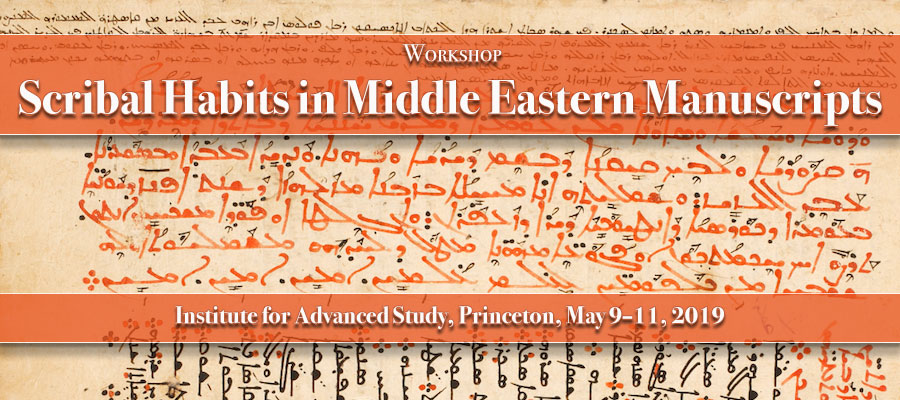Scribal Habits in Middle Eastern Manuscripts Workshop, Institute for Advanced Study, Princeton, May 9–11, 2019
Most scholars who employ manuscripts in their research tend to focus on the literary content itself. But what about the role of the scribe who typically remains at the periphery of research? How can we, in the words of the NT textual critic James Royse, “virtually look over the scribe’s shoulder” to understand the process by which our manuscripts were produced. The aim of this workshop is to bring together scholars from various disciplines to study the individuals who produced our manuscripts and how they shaped the transmission of literary texts they copied.
Topics may include:
- The qualities, habits and skills of the scribe.
- Typology of changes made by scribes.
- The visual features of the MSS as produced by scribes.
- How can scribal habits help us reconstruct texts?
- Why do scribes deviate from their exemplars?
- How are peculiar readings produced?
- What does the scribe do when (s)he spots an error?
- What is the right spelling of a word and how are orthographic variants produced?
- Is it time for a new paragraph?
- Second-hand scribes (e.g. vocalizers, dotters, and commentators).
- Extra-textual elements in manuscripts
This workshop will focus on Middle Eastern manuscripts written in Hebrew, Syriac, Arabic, Persian, Armenian, Coptic and other languages.
